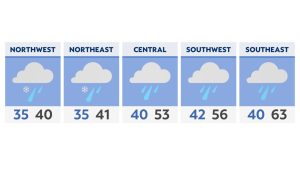OHIO — The pandemic had serious impacts on K-12 learning. Right now, a number of Ohio’s third graders are struggling with literacy proficiency.
What You Need To Know
- Less than 50% of third graders in Ohio are not on track for reading, according to the Ohio Department of Education
- ODE’s been working with districts across Ohio to raise literacy achievement
- A $42 million grant is being used to address the literacy challenges in Ohio
- Case studies are being performed at schools around the state
Melissa Weber-Mayrer, director for the Office of Approaches to Teaching and Professional Learning at the Ohio Department of Education, explained that Ohio has a plan which focuses on evidence-based practices and strategies to help those at birth all the way through 12th grade when it comes to reading.
“It includes explicit and systematic phonics instruction, instruction in Phonemic, awareness, vocabulary, fluency and comprehension,” said Weber-Mayrer.
Weber-Mayrer said the state has a $42 million comprehensive development grant that allows them to work with schools, 92 of which will be model sites in each region of the state. So far, she and her team have been able to work with “intervention specialists in classrooms, speech and language pathologists, school psychologists, principals and buildings, and then district leaders to work on building really strong systems to support all children.”
One place Weber-Mayrer and her team have been able to study is Riverside Local Schools. There teachers, support staff and the principal went through professional development training.
The idea was to help everyone not only build their skills, but understand what it means to teach readers, especially those who struggle with reading. Weber-Mayrer said at the same time, they changed out some instructional materials that weren’t working and implemented new, high quality instructional materials that aligned more closely to their data.
As a result, their literacy rates increased from 53% to about 93%. Although the data sets include two different groups of students, Weber-Mayrer said, “Those students started with new curriculum materials and teachers with stronger knowledge. So, by the time they got to third grade, that’s where we saw that 90% increase.”
Having their principal be all in, set non-negotiables and expectations helped in turning things around, causing teachers to be more successful.
Moving forward, the Department of Education plans to make more visits around the state while performing case studies in an effort to raise literacy achievement.




